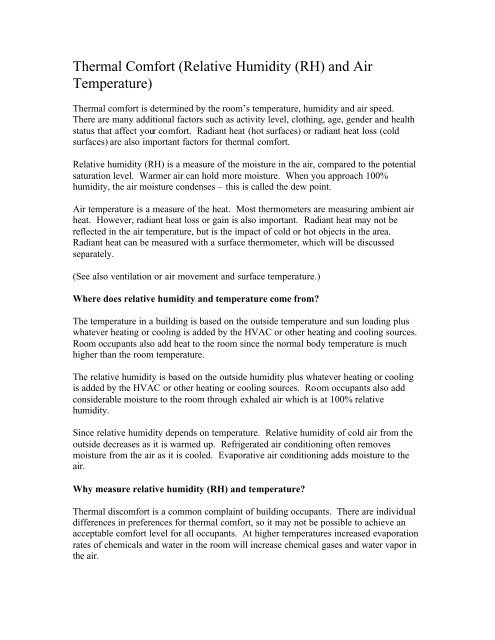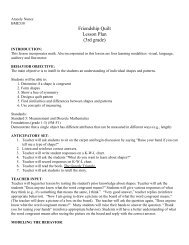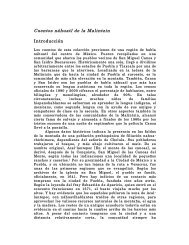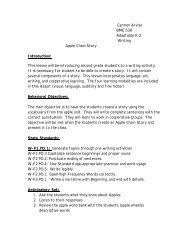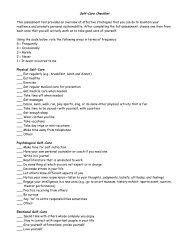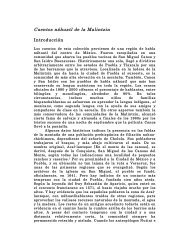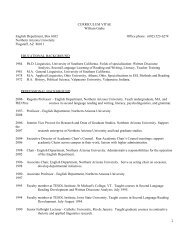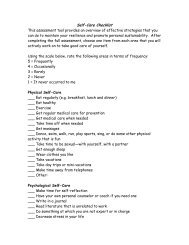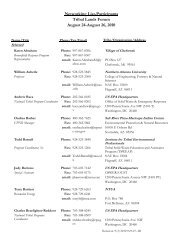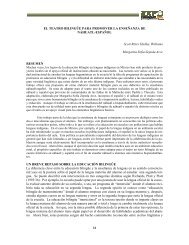Thermal Comfort (Relative Humidity (RH) and Air ... - www4
Thermal Comfort (Relative Humidity (RH) and Air ... - www4
Thermal Comfort (Relative Humidity (RH) and Air ... - www4
Create successful ePaper yourself
Turn your PDF publications into a flip-book with our unique Google optimized e-Paper software.
<strong>Thermal</strong> <strong>Comfort</strong> (<strong>Relative</strong> <strong>Humidity</strong> (<strong>RH</strong>) <strong>and</strong> <strong>Air</strong><br />
Temperature)<br />
<strong>Thermal</strong> comfort is determined by the room’s temperature, humidity <strong>and</strong> air speed.<br />
There are many additional factors such as activity level, clothing, age, gender <strong>and</strong> health<br />
status that affect your comfort. Radiant heat (hot surfaces) or radiant heat loss (cold<br />
surfaces) are also important factors for thermal comfort.<br />
<strong>Relative</strong> humidity (<strong>RH</strong>) is a measure of the moisture in the air, compared to the potential<br />
saturation level. Warmer air can hold more moisture. When you approach 100%<br />
humidity, the air moisture condenses – this is called the dew point.<br />
<strong>Air</strong> temperature is a measure of the heat. Most thermometers are measuring ambient air<br />
heat. However, radiant heat loss or gain is also important. Radiant heat may not be<br />
reflected in the air temperature, but is the impact of cold or hot objects in the area.<br />
Radiant heat can be measured with a surface thermometer, which will be discussed<br />
separately.<br />
(See also ventilation or air movement <strong>and</strong> surface temperature.)<br />
Where does relative humidity <strong>and</strong> temperature come from?<br />
The temperature in a building is based on the outside temperature <strong>and</strong> sun loading plus<br />
whatever heating or cooling is added by the HVAC or other heating <strong>and</strong> cooling sources.<br />
Room occupants also add heat to the room since the normal body temperature is much<br />
higher than the room temperature.<br />
The relative humidity is based on the outside humidity plus whatever heating or cooling<br />
is added by the HVAC or other heating or cooling sources. Room occupants also add<br />
considerable moisture to the room through exhaled air which is at 100% relative<br />
humidity.<br />
Since relative humidity depends on temperature. <strong>Relative</strong> humidity of cold air from the<br />
outside decreases as it is warmed up. Refrigerated air conditioning often removes<br />
moisture from the air as it is cooled. Evaporative air conditioning adds moisture to the<br />
air.<br />
Why measure relative humidity (<strong>RH</strong>) <strong>and</strong> temperature?<br />
<strong>Thermal</strong> discomfort is a common complaint of building occupants. There are individual<br />
differences in preferences for thermal comfort, so it may not be possible to achieve an<br />
acceptable comfort level for all occupants. At higher temperatures increased evaporation<br />
rates of chemicals <strong>and</strong> water in the room will increase chemical gases <strong>and</strong> water vapor in<br />
the air.
At higher relative humidity (<strong>RH</strong>) levels (more than 60%) can encourage the growth of<br />
mold <strong>and</strong> mildew. Dust mites, bacteria, <strong>and</strong> fungi all thrive under moist, humid<br />
conditions. At lower relative humidity (<strong>RH</strong>) (less than 30%), occupants might experience<br />
eye irritation or a stuffy nose. For some individuals low relative humidity (<strong>RH</strong>) may<br />
aggravate allergies. Low relative humidity can also lead to increased survival of some<br />
viruses, thereby increasing the spread of viral infections.<br />
How do I measure relative humidity <strong>and</strong> temperature?<br />
There are a variety of meters for measuring relative humidity <strong>and</strong> temperature. (Google<br />
“temperature <strong>and</strong> relative humidity measurements”) Meters can also usually be found in<br />
a department store or a hardware store.<br />
You may want to consider recommending a “Wall Plate Thermometer Model 22101” for<br />
bathrooms <strong>and</strong> kitchens. This Wall Plate Thermometer gives the resident a constant <strong>RH</strong><br />
reading.<br />
The temperature <strong>and</strong> relative humidity can vary considerably around the room. If you<br />
make one measurements at one location in a room, be aware that this measurement is just<br />
a “sample” for the room. Occupants sitting near a heat source may be experiencing<br />
considerably different conditions. The temperature <strong>and</strong> relative humidity can vary<br />
considerably throughout the day, so you might consider taking measurements over a 24<br />
hour or even a one-week period.<br />
What are some normal levels of relative humidity (<strong>RH</strong>) <strong>and</strong> temperature for indoor<br />
air?<br />
The normal levels of relative humidity <strong>and</strong> temperature for indoor air will vary widely<br />
from region (climate) to region (climate). Individuals can also vary widely as to what<br />
they find acceptable.<br />
What st<strong>and</strong>ards are there for relative humidity (<strong>RH</strong>) <strong>and</strong> temperature?<br />
There are no EPA st<strong>and</strong>ards.<br />
The American Society of Heating, Refrigerating, <strong>and</strong> <strong>Air</strong> Conditioning Engineers, Inc<br />
(ASHRAE) provides guidelines that are intended to satisfy the majority of building<br />
occupants wearing a normal amount of clothing while working at a desk. The ASHRAE<br />
guidelines recommend 68 F to 74 F in the winter <strong>and</strong> 72 F to 80 F in the summer. The<br />
ASHRAE guidelines recommend a relative humidity (<strong>RH</strong>) of 30 to 60 percent.


